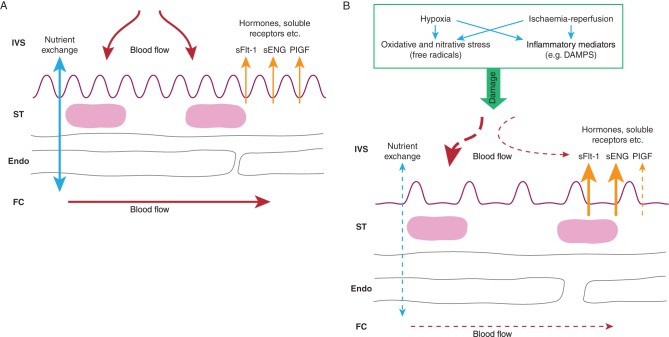Figure 1.
(A) Image showing the main structural and functional elements of the exchange barrier of the normal placenta: IVS intervillous space with maternal blood; ST syncytiotrophoblast – the placental epithelium; Endo fetal capillary endothelium; FC fetal capillary with fetal blood. (B) Consequences of abnormal spiral artery invasion and conversion on the structure and function of the placenta. Hypoxia and ischaemia-reperfusion may lead to the formation of free radicals and/or inflammatory mediators such as damage-associated molecular patterns (DAMPS). These could cause: abnormal blood flow patterns in the IVS; decreased fetoplacental blood flow; altered structure of the exchange barrier (e.g. reduced surface area and increased thickness of the ST) with reduced nutrient transfer; increases and decreases in secretion of hormones, soluble receptors and other placental proteins and factors. All of these are potential targets for treatments of placental dysfunction.

 This work is licensed under a
This work is licensed under a 